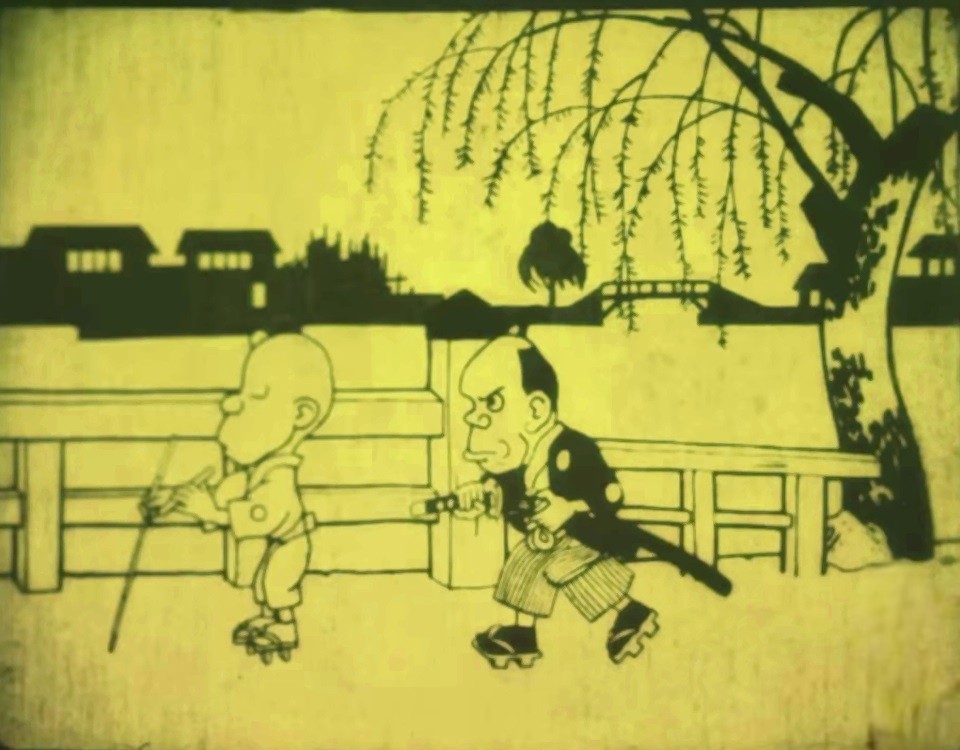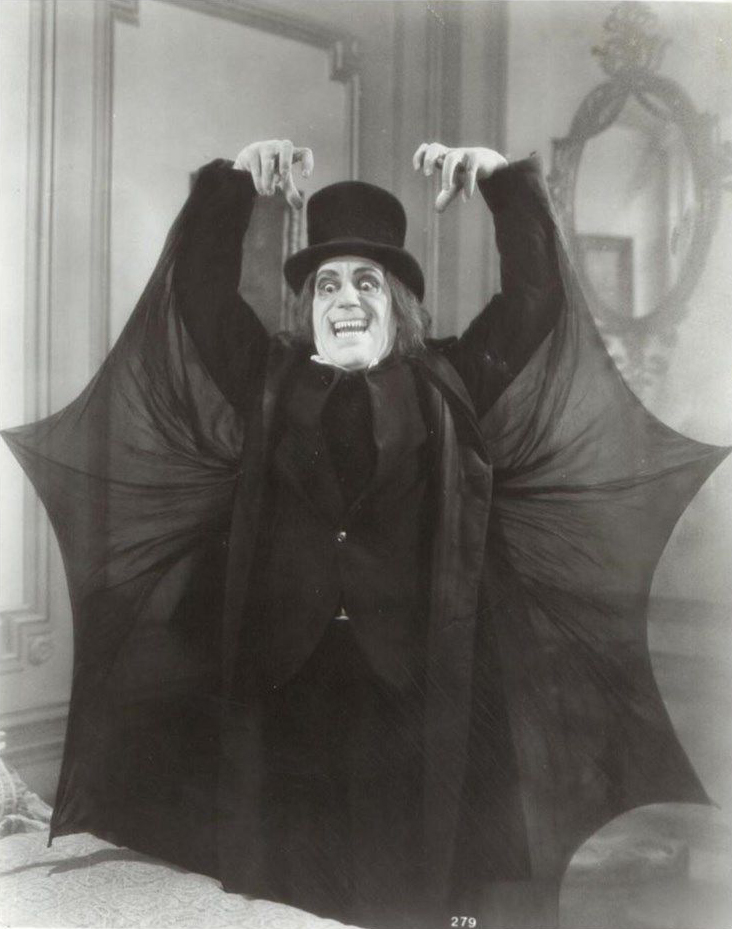|
Katsudō Shashin
, sometimes called the Matsumoto fragment, is a Japanese animated filmstrip from the Meiji era that is the oldest known work of animation from Japan. Its creator is unknown. Evidence suggests it was made somewhere between 1907 and 1912, so it may predate the earliest displays of Western animated films in Japan. It was discovered in a collection of films and projectors in Kyoto in 2005. The three-second filmstrip depicts a boy who writes "", removes his hat, and bows. The frames were stencilled in red and black using a device for making magic lantern slides, and the filmstrip was fastened in a loop for continuous play. Description ''Katsudō Shashin'' consists of a series of cartoon images on fifty frames of a celluloid strip and lasts three seconds at sixteen frames per second. It depicts a young boy in a sailor suit who writes the kanji characters "" (''katsudō shashin'', "moving picture" or "Activity photo") from right to left, then turns to the viewer, removes his hat ... [...More Info...] [...Related Items...] OR: [Wikipedia] [Google] [Baidu] |
Cinematograph
Cinematograph or kinematograph is an early term for several types of motion picture film mechanisms. The name was used for movie cameras as well as film projectors, or for complete systems that also provided means to print films (such as the Lumière). History A device by this name was invented and patented as the " Léon Bouly" by French inventor Léon Bouly on February 12, 1892. Bouly coined the term "cinematograph," from the Greek for "writing in movement."Abel, Richard. Encyclopedia of Early Cinema. 1st ed. London: Routledge, 2004. Due to a lack of money, Bouly could not develop his ideas properly and maintain his patent fees, so the Lumière brothers were free to adopt the name. In 1895, they applied it to a device that was mostly their own invention. The Lumière brothers made their first film, '' Workers Leaving the Lumière Factory'' (''Sortie de l'usine Lumière de Lyon''), that same year. The first commercial, public screening of cinematographic films happened ... [...More Info...] [...Related Items...] OR: [Wikipedia] [Google] [Baidu] |
Asahi Shimbun
is a Japanese daily newspaper founded in 1879. It is one of the oldest newspapers in Japan and Asia, and is considered a newspaper of record for Japan. The ''Asahi Shimbun'' is one of the five largest newspapers in Japan along with the ''Yomiuri Shimbun'', the ''Mainichi Shimbun'', the ''The Nikkei, Nihon Keizai Shimbun'' and ''Chunichi Shimbun''. The newspaper's circulation, which was 4.57 million for its morning edition and 1.33 million for its evening edition as of July 2021, was second behind that of the ''Yomiuri Shimbun''. By print circulation, it is the second List of newspapers in the world by circulation, largest newspaper in the world behind the ''Yomiuri'', though its digital size trails that of many global newspapers including ''The New York Times''. Its publisher, is a media conglomerate with its registered headquarters in Osaka. It is a privately held company, privately held family business with ownership and control remaining with the founding Murayama and Uen ... [...More Info...] [...Related Items...] OR: [Wikipedia] [Google] [Baidu] |
Winsor McCay
Zenas Winsor McCay ( – July 26, 1934) was an American cartoonist and animator. He is best known for the comic strip ''Little Nemo'' (1905–1914; 1924–1927) and the animated film ''Gertie the Dinosaur'' (1914). For contractual reasons, he worked under the pen name Silas on the comic strip ''Dream of the Rarebit Fiend''. From a young age, McCay was a quick, prolific, and technically dextrous artist. He started his professional career making posters and performing for dime museums, and in 1898 began illustrating newspapers and magazines. In 1903 he joined the ''New York Herald'', where he created popular comic strips such as ''Little Sammy Sneeze'' and ''Dream of the Rarebit Fiend''. In 1905, his signature strip ''Little Nemo in Slumberland'' debuted—a fantasy strip in an Art Nouveau style about a young boy and his adventurous dreams. The strip demonstrated McCay's strong graphic sense and mastery of color and Perspective (graphical), linear perspective. McCay experimented w ... [...More Info...] [...Related Items...] OR: [Wikipedia] [Google] [Baidu] |
Meiji (era)
The was an era of Japanese history that extended from October 23, 1868, to July 30, 1912. The Meiji era was the first half of the Empire of Japan, when the Japanese people moved from being an isolated feudal society at risk of colonization by Western powers to the new paradigm of a modern, industrialized nation state and emergent great power, influenced by Western scientific, technological, philosophical, political, legal, and aesthetic ideas. As a result of such wholesale adoption of radically different ideas, the changes to Japan were profound, and affected its social structure, internal politics, economy, military, and foreign relations. The period corresponded to the reign of Emperor Meiji. It was preceded by the Keiō era and was succeeded by the Taishō era, upon the accession of Emperor Taishō. The rapid modernization during the Meiji era was not without its opponents, as the rapid changes to society caused many disaffected traditionalists from the former samu ... [...More Info...] [...Related Items...] OR: [Wikipedia] [Google] [Baidu] |
Nuremberg
Nuremberg (, ; ; in the local East Franconian dialect: ''Nämberch'' ) is the Franconia#Towns and cities, largest city in Franconia, the List of cities in Bavaria by population, second-largest city in the States of Germany, German state of Bavaria, and its 544,414 (2023) inhabitants make it the List of cities in Germany by population, 14th-largest city in Germany. Nuremberg sits on the Pegnitz (river), Pegnitz, which carries the name Regnitz from its confluence with the Rednitz in Fürth onwards (), and on the Rhine–Main–Danube Canal, that connects the North Sea to the Black Sea. Lying in the Bavarian Regierungsbezirk, administrative region of Middle Franconia, it is the largest city and unofficial capital of the entire cultural region of Franconia. The city is surrounded on three sides by the , a large forest, and in the north lies (''garlic land''), an extensive vegetable growing area and cultural landscape. The city forms a continuous conurbation with the neighbouring ... [...More Info...] [...Related Items...] OR: [Wikipedia] [Google] [Baidu] |
Osaka University Of Arts
is a private arts university located in Kanan, Minamikawachi District, Osaka Prefecture, Japan. The university was founded in 1945 as , changing its name to in 1957, and then to in 1964. The university adopted the current name in 1966. Notable teachers * Toshiyuki Hosokawa * Takeji Iwamiya *Kazuo Koike * Sadao Nakajima *Kazuki Ōmori *Go Nagai * Teruaki Georges Sumioka, Full Professor of Philosophy *Miho Morikawa, Professor - Music Performance Department Notable alumni *Takami Akai, illustrator *Hideaki Anno, animation and film director *Kiyohiko Azuma, manga author and illustrator *Arata Furuta, actor *Satoshi Hashimoto, voice actor * Tenpei Nakamura, pianist * Katsunori Ozaki, pianist * Kenjiro Hata, manga artist * Uta Isaki, manga artist *Toshio Kakei, actor *Koji Kanemoto *Shinichiro Kimura, anime director * Toshiyuki Kita, furniture designer *Takashi Tezuka, video game designer at ''Nintendo'' *Yoshiaki Koizumi, video game designer at ''Nintendo'' *Koji Kondo, video g ... [...More Info...] [...Related Items...] OR: [Wikipedia] [Google] [Baidu] |
Iconography
Iconography, as a branch of art history, studies the identification, description and interpretation of the content of images: the subjects depicted, the particular compositions and details used to do so, and other elements that are distinct from artistic style. The word ''iconography'' comes from the Ancient Greek, Greek ("image") and ("to write" or ''to draw''). A secondary meaning (based on a non-standard translation of the Greek and Russian equivalent terms) is the production or study of the religious images, called "Icon, icons", in the Byzantine art, Byzantine and Eastern Orthodox Churches, Orthodox Christian tradition. This usage is mostly found in works translated from languages such as Greek or Russian, with the correct term being "icon painting". In art history, "an iconography" may also mean a particular depiction of a subject in terms of the content of the image, such as the number of figures used, their placing and gestures. The term is also used in many academic ... [...More Info...] [...Related Items...] OR: [Wikipedia] [Google] [Baidu] |
Namakura-gatana
is a Japanese animated short film produced by Jun'ichi Kōuchi in 1917. It was rediscovered by an antique shop employee in Osaka in March 2008. This film is a 4-minute silent short that tells a story about a foolish ''rōnin'' purchase of a dull-edged sword and subsequent attempts at ''tsujigiri''. It was released on June 30, 1917, and is among the very earliest examples of anime. Plot is a short comedic ''jidaigeki'' about a dim-witted self-appointed samurai. He gets fooled and buys a dull sword from a merchant. The samurai, trying to figure out why his new sword cannot cut anyone he strikes, tries desperately to attack random townspeople who defend themselves and knock him out. How it was "rediscovered" It has been said that the film collector Goro Sugimoto once possessed a 35mm film of this work, but it was destroyed in a suspicious fire in 1971 * The year 1971 had three partial solar eclipses (Solar eclipse of February 25, 1971, February 25, Solar eclipse of July ... [...More Info...] [...Related Items...] OR: [Wikipedia] [Google] [Baidu] |
Lost Film
A lost film is a feature film, feature or short film in which the original negative or copies are not known to exist in any studio archive, private collection, or public archive. Films can be wholly or partially lost for a number of reasons. Early films were not thought to have value beyond their theatrical run, so many were discarded afterward. Nitrate film used in early pictures was highly flammable and susceptible to degradation. The Library of Congress began acquiring copies of American films in 1909, but not all were kept. Due to improvements in film technology and recordkeeping, few films produced in the 1950s or beyond have been lost. Rarely, but occasionally, films classified as lost are found in an uncataloged or miscataloged archive or private collection, becoming "rediscovered films". Conditions During most of the 20th century, American copyright law required at least one copy of every American film to be deposited at the Library of Congress at the time of copyri ... [...More Info...] [...Related Items...] OR: [Wikipedia] [Google] [Baidu] |
Jun'ichi Kōuchi
was a Japanese animator. He is referred to as one of the "fathers" of anime is a Traditional animation, hand-drawn and computer animation, computer-generated animation originating from Japan. Outside Japan and in English, ''anime'' refers specifically to animation produced in Japan. However, , in Japan and in Ja .... Works *''Hanawa Hekonai Meitō no Maki, or The Dull Sword'' (1917) *''Chamebō Kūkijūno Maki'' (1917) *''Hanawa Hekonai Kappa Matsuri'' (1917) *''Eiga Enzetsu Seiji no Rinrika Gotō Shinpei'' (1926) *''Chonkire Hebi'' (1930) References External links *Jun'ichi Kōuchiat the National Film Archive of Japan Japanese animators Anime directors Japanese animated film directors Japanese animated film producers 1886 births 1970 deaths {{anime-bio-stub ... [...More Info...] [...Related Items...] OR: [Wikipedia] [Google] [Baidu] |
Seitarō Kitayama
was an early Japanese animation director whose work includes the first examples of commercial production of anime. Kitayama was referred to as one of the fathers of anime by Yoshirō Irie, a researcher at Japan's National Film Center. Works *'' Battle of a Monkey and a Crab'' (1917) *''Yume no jidōsha'' (1917) *''Neko to nezumi'' (1917) *''Itazura posuto'' (1917) *''Hanasaka-jiji'' (1917) *''Chokin no susume'' (1917) *''(Otogibanashi–) Bunbuku chagama'' (1917) *''Shitakire suzume'' (1917) *''Kachikachiyama'' (1917) *''Chiri mo tsumoreba yama to naru'' (1917) *''Urashima Tarō'' (1918) *''Momotarō is a Folk hero, popular hero of Japanese folklore. His name is often translated as ''Peach Boy'', but is directly translated as ''Peach + Tarō (given name), Tarō'', a common Japanese given name. ''Momotarō'' is also the title of various books, ...'' *'' Tarou no Banpei Senkoutei no Maki'' References 1945 deaths Anime directors 1888 births Articles containing video cli ... [...More Info...] [...Related Items...] OR: [Wikipedia] [Google] [Baidu] |







